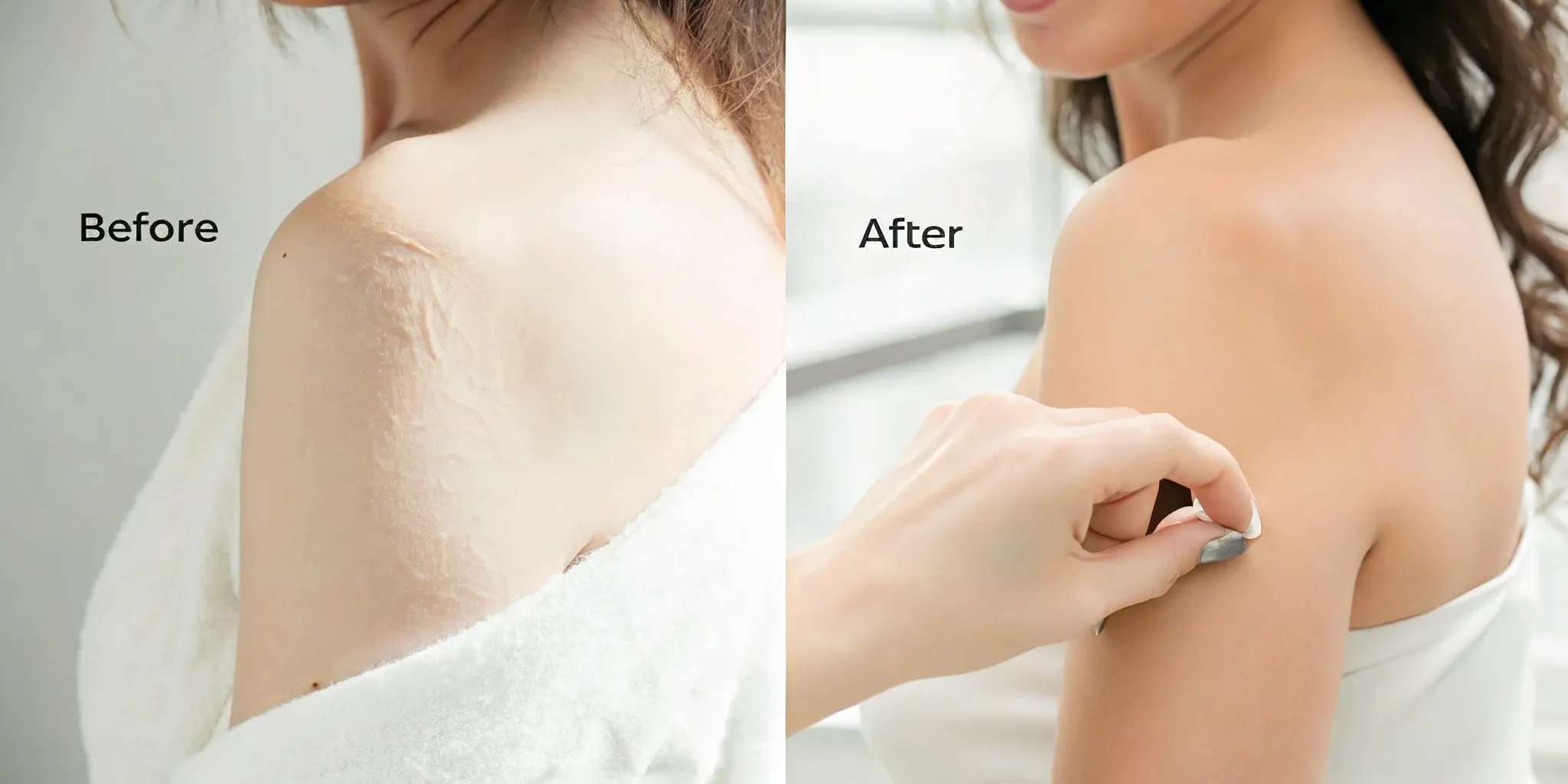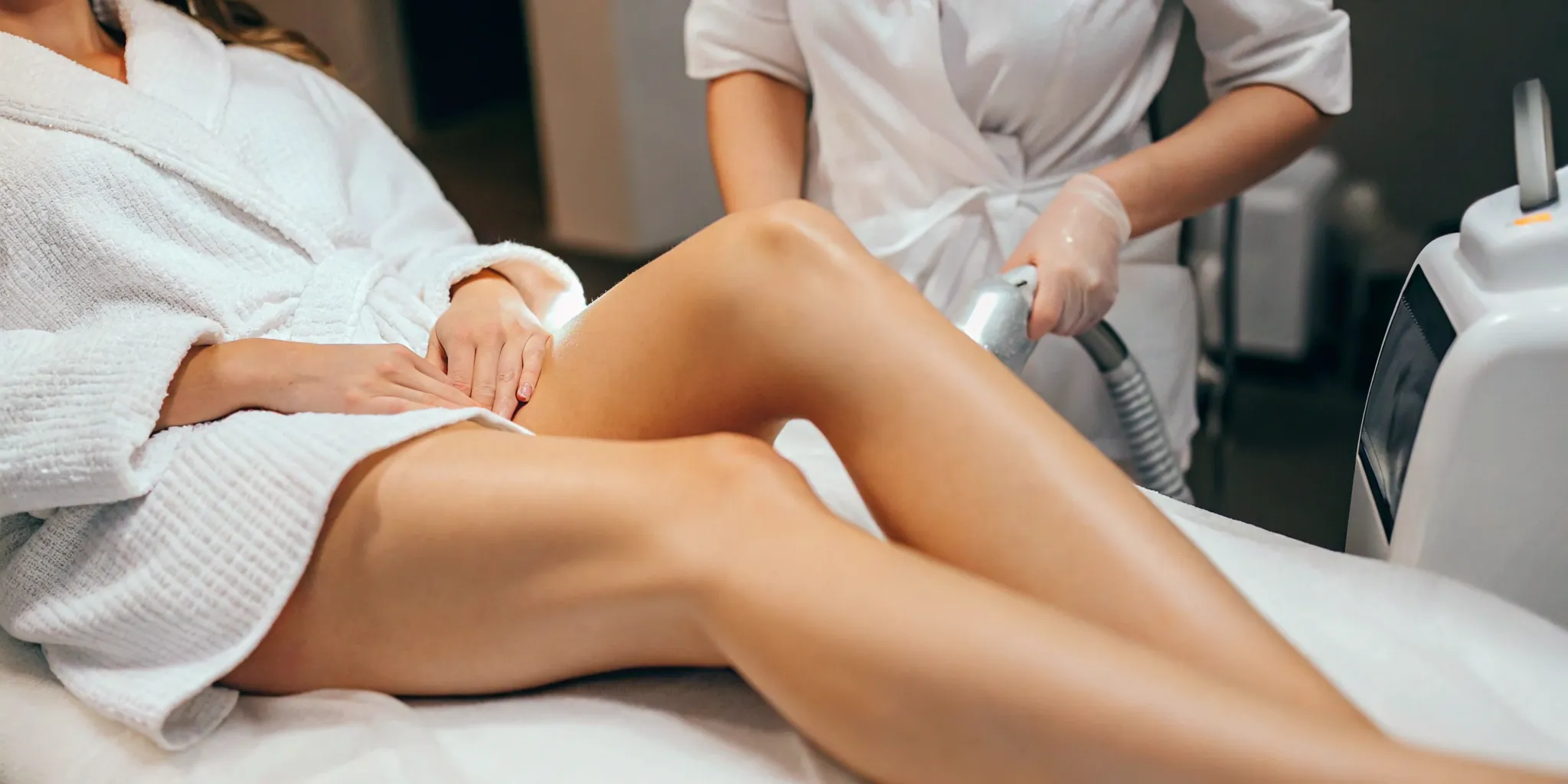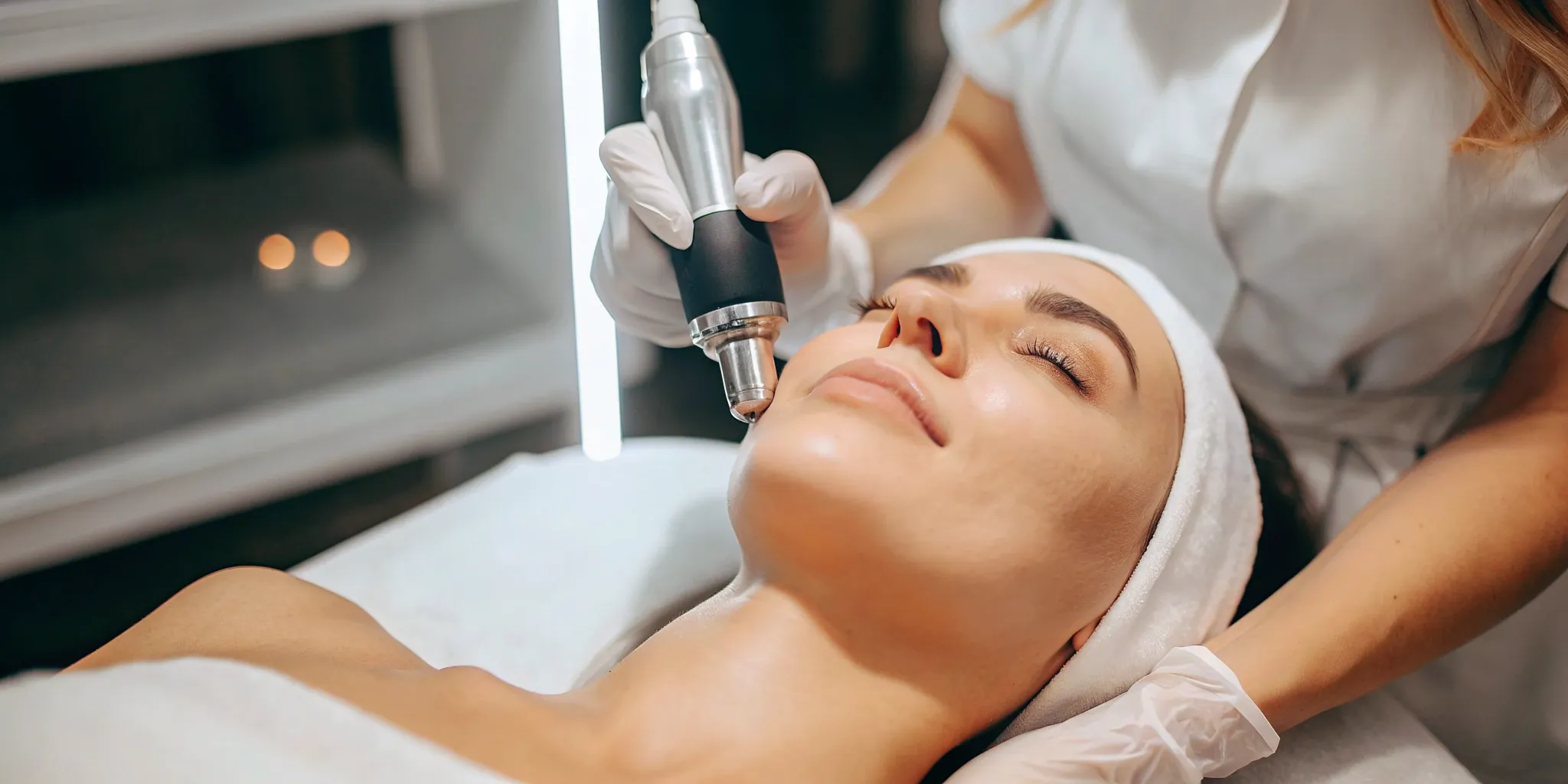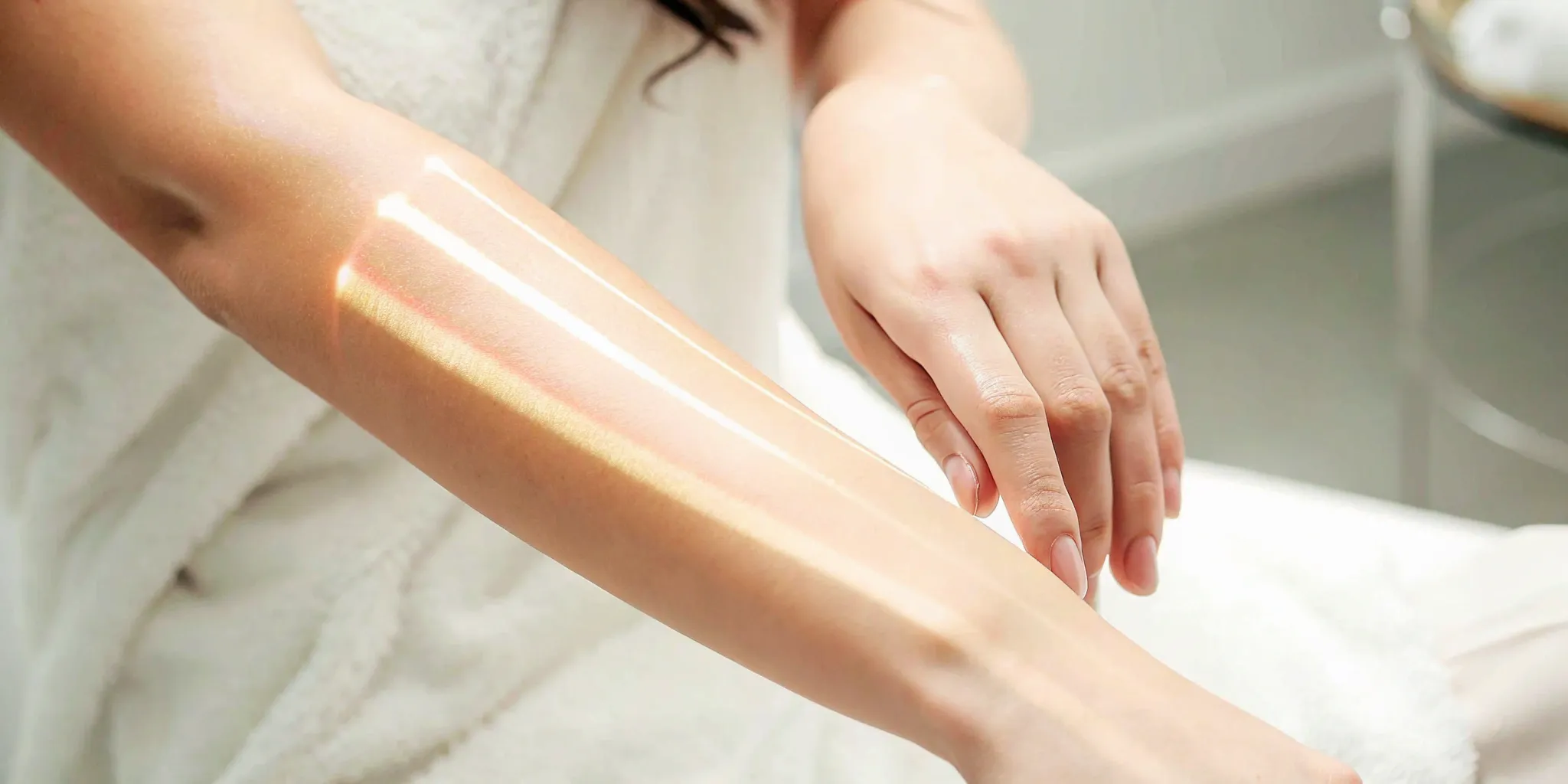That tattoo you got years ago might not feel like you anymore. If you’re ready for a clean slate, you’ve probably started looking into your options. The world of tattoo removal can feel overwhelming at first, with questions about pain, cost, and how long it all takes. This guide is here to walk you through everything you need to know, from the science behind how lasers work to the simple aftercare steps that ensure your skin heals beautifully. We’ll cover what to expect during your sessions, how to choose the right specialist, and what factors determine your final results, giving you the clarity and confidence to take the next step.
Key Takeaways
- Laser Treatment is the Top Choice for Removal: Unlike surgical or abrasive methods, laser removal works with your body. It safely shatters ink particles without harming the surrounding skin, allowing your immune system to naturally clear the tattoo over time for the best results with minimal risk.
- Your Results are Highly Personalized: The success and speed of your removal depend on specific factors like the tattoo’s colors and age, its location on your body, and your skin type. A professional consultation is the only way to get a realistic timeline and understand the outcome you can expect.
- Success is a Partnership: Finding a certified specialist with modern technology is the first step. The second is your commitment to following their pre- and post-treatment care instructions, which is essential for proper healing and achieving the clearest possible result.
What Are the Different Tattoo Removal Methods?
If you’re ready to say goodbye to a tattoo, you have a few different paths you can take. The right choice for you depends on factors like your tattoo’s size, your skin type, and your desired outcome. Understanding the most common methods is the first step toward making a confident decision. From advanced laser treatments to more traditional surgical options, let’s walk through how each one works, what you can expect, and the results they deliver.
Laser Tattoo Removal
This is the gold standard for a reason. Laser tattoo removal is widely considered the safest and most effective way to get rid of unwanted ink. The process uses highly concentrated light energy, delivered in incredibly short bursts from advanced Q-switched or picosecond lasers. This energy doesn’t burn the skin; instead, it targets and shatters the ink particles into tiny fragments. Your body’s natural immune system then steps in to clear these particles away, causing the tattoo to fade over a series of treatments. It’s a precise and targeted approach that minimizes damage to the surrounding skin.
Surgical Excision
Surgical excision is exactly what it sounds like: a surgeon cuts out the tattooed skin and then stitches the remaining skin together. This method is most practical for very small tattoos, especially those in areas where the skin is a bit looser. The main advantage is that it provides immediate, one-and-done results—the tattoo is physically gone after the procedure. However, the significant downside is that it will always leave a scar. For anyone looking to avoid trading ink for a scar, this might not be the ideal solution.
Chemical Peels
You might be familiar with chemical peels for facial rejuvenation, and a similar principle can be applied to tattoo fading. This method involves applying a professional-grade acid to the skin, which removes the outer layers and can help lighten a tattoo over time. While it can have some effect, chemical peels are generally not powerful enough to reach the deeper layers of skin where tattoo ink resides. Because of this, they are often less effective than other methods and can cause significant skin irritation without fully removing the tattoo.
Dermabrasion
Dermabrasion is a more aggressive mechanical method that essentially sands down the tattooed skin. A specialized, high-speed abrasive tool is used to remove the top layers of skin, taking the tattoo ink with them. This process can be quite painful and often requires a lengthy and uncomfortable recovery period. It also carries a high risk of scarring and can lead to changes in skin texture and pigmentation. Due to these drawbacks, dermabrasion is a much less common choice for tattoo removal today.
Comparing the Methods: Effectiveness and Safety
When you line up all the options, laser tattoo removal consistently comes out on top for both safety and effectiveness. It’s the only method that can break down ink without cutting or abrading the skin, leading to clearer results with a lower risk of scarring. While surgical excision offers instant removal, it’s only suitable for small tattoos and guarantees a scar. Meanwhile, chemical peels and dermabrasion are less reliable, carry higher risks of skin damage, and often fail to completely remove the ink. For a treatment plan tailored to your specific needs, it’s always best to schedule a consultation with a professional.
How Does Laser Tattoo Removal Work?
If you’re thinking about removing a tattoo, you’ve probably heard that lasers are the gold standard. But how exactly does a beam of light make ink disappear? It’s a fascinating process that combines advanced technology with your body’s natural ability to heal. The laser doesn’t just “erase” the tattoo; it works with your immune system to break down and clear away the ink particles, gradually fading the design until it’s gone. Let’s walk through how it all comes together.
The Science Behind the Laser
At its core, laser tattoo removal is about breaking down large ink particles into pieces small enough for your body to handle. When you get a tattoo, your immune system recognizes the ink as a foreign substance. It sends white blood cells called macrophages to engulf the ink, but the particles are too large to be carried away. So, the macrophages just hold onto them, which is why your tattoo is permanent. A specialized laser sends a high-intensity pulse of light into the skin, which shatters the ink into tiny fragments. Once the ink is broken down, your body’s immune system can finally do its job, flushing the particles out naturally over time.
Today’s Advanced Laser Technologies
Not all lasers are created equal. Modern medspas use advanced systems like Q-switched or picosecond lasers, which are designed specifically for targeting tattoo ink without harming the surrounding skin. At Ultimate Image MedSpa, we use state-of-the-art picosecond lasers. These devices deliver energy in ultra-short bursts—we’re talking trillionths of a second! This rapid pulse creates a powerful photo-acoustic effect that shatters ink into much smaller particles than older lasers could. Smaller particles mean your body can clear the ink more efficiently, often leading to better results in fewer sessions.
Your Treatment Timeline
Removing a tattoo is a journey, not a single event. Because your body needs time to flush out the shattered ink particles, sessions are typically spaced several weeks apart. Most tattoos require between five to eight sessions to achieve significant fading or complete removal. However, this can vary quite a bit. An older, faded black tattoo might only need three or four sessions to disappear. On the other hand, a brand-new, brightly colored, or very dense tattoo could take ten or more sessions to fully clear. Your specialist will create a treatment plan tailored to your specific tattoo during your consultation.
What Influences Your Results?
The success of your tattoo removal depends on a unique combination of factors. The size, age, and colors of your tattoo all play a major role—black ink is generally the easiest to remove, while lighter colors like yellow and green can be more stubborn. The location of the tattoo also matters; tattoos on areas with better circulation, like your torso, tend to fade faster than those on your hands or feet. Your skin type and how well your body heals are also key components. A personalized consultation is the best way to understand what you can expect for your specific situation.
What to Expect During Your Laser Sessions
Deciding to remove a tattoo is a big step, and it’s natural to have questions about what the process actually involves. Knowing what to expect can make the entire experience feel more comfortable and straightforward. From your first conversation with a specialist to caring for your skin between appointments, each step is designed to get you the best possible results safely. Think of it as a partnership between you and your clinician, working together to clear your canvas.
The journey is a marathon, not a sprint, and it’s broken down into a series of manageable sessions. Each visit builds on the last, gradually breaking down the ink and allowing your body to process it. Let’s walk through what you can anticipate during your laser tattoo removal sessions, so you can feel confident and prepared from day one.
The Initial Consultation
Your first appointment is all about creating a personalized game plan. This is where you’ll sit down with a specialist to discuss your goals and get all your questions answered. You’ll talk about the tattoo you want to remove—its age, colors, size, and location—as all these details affect the treatment approach. The clinician will assess your skin type and review your medical history to ensure you’re a good candidate for the procedure. This initial meeting is the perfect time to build a rapport with your provider and make sure you feel comfortable. It’s a crucial step in tailoring the laser tattoo removal process specifically to you and your tattoo.
How Many Sessions Will You Need?
One of the most common questions is, “How long will this take?” The truth is, there’s no single answer. The number of sessions you’ll need depends entirely on your unique tattoo. On average, most people require between 5 and 8 sessions to see significant fading. However, an older, simple black tattoo might only need 3 or 4 treatments, while a newer, multi-colored piece could take 10 or more. Factors like ink density, your skin tone, and how well your body responds to the treatment all play a role. Your specialist will give you a more precise estimate during your consultation after evaluating your tattoo, so you’ll have a clear idea of the timeline from the start.
Your Pain Management Options
Let’s talk about comfort. Many people compare the sensation of the laser to a rubber band snapping against the skin—it’s quick and manageable, but it can be uncomfortable. The good news is that there are ways to make the experience much more pleasant. Before your session begins, your clinician will likely apply a topical numbing cream to the area to dull the sensation. Many clinics, including ours, also use a special cooling device that blows chilled air onto the skin during the treatment. This simple tool is incredibly effective at minimizing discomfort, allowing you to relax while the laser does its work. Your comfort is a top priority, so don’t hesitate to discuss your concerns.
Caring for Your Skin Between Sessions
What you do after you leave the clinic is just as important as the treatment itself. Proper aftercare is essential for healing and achieving the best results. For the first few days, you’ll need to keep the treated area clean and dry. This typically involves gently washing it with mild soap and water, applying a recommended antibiotic ointment, and keeping it covered with a sterile bandage. Following these instructions helps prevent infection and supports your skin’s natural healing process. Your clinician will provide you with a detailed aftercare plan, but don’t hesitate to contact us if you have any questions during your recovery.
Setting Realistic Expectations for Your Results
The goal of laser tattoo removal is to fade the ink until it’s no longer visible, and modern technology makes this more achievable than ever. However, it’s important to have realistic expectations. While many tattoos can be completely cleared, some may leave behind a faint shadow or slight discoloration. The final outcome depends heavily on the tattoo’s characteristics—like the colors of ink used and its location on your body. During your consultation, your specialist will be transparent about the kind of results you can expect. The aim is to achieve a result you’re happy with, whether that’s significant fading for a cover-up or complete removal.
Your Guide to Aftercare and Recovery
The work doesn’t stop when you leave the medspa. How you care for your skin after a laser tattoo removal session is just as important as the treatment itself. Following a solid aftercare plan helps your skin heal properly, reduces the risk of complications, and leads to the best possible results. Think of it as teamwork between you and your technician—they handle the laser, and you handle the healing. Here’s what you need to know to make your recovery smooth and successful.
Common Side Effects to Expect
It’s completely normal to experience a few side effects as your skin begins to heal. Immediately after treatment, you can expect some redness, swelling, and a sensation similar to a sunburn. Many people say the discomfort feels like a rubber band snapping against the skin, which is usually less intense than getting the tattoo. You might also see some blistering within the first 24 hours. While it might look a little alarming, blistering is actually a good sign—it means your immune system is actively working to flush out the ink particles. These effects are temporary and a standard part of the healing process.
The Typical Recovery Timeline
Patience is a key part of the tattoo removal journey. While you might see some fading after your first few sessions, the entire process is gradual. Most people need between 8 to 12 treatments, spaced several weeks apart, to achieve their desired results. This means the full timeline can stretch over a year or more. Your body needs that time between appointments to break down the shattered ink particles and carry them away. Sticking to the recommended schedule gives your skin the time it needs to heal properly and allows your body to do its job effectively.
Essential Aftercare Guidelines
Following a few simple rules after your session will make a huge difference in your healing. For the first few days, keep the treated area clean and dry. You can gently wash it with a mild, fragrance-free soap and pat it dry. It’s a good idea to avoid hot tubs, saunas, and intense exercise for at least 24 to 48 hours to prevent irritation. Sun protection is also non-negotiable. Keep the area covered or apply a high-SPF mineral sunscreen whenever you go outside, as UV exposure can interfere with the healing process and cause skin discoloration.
When to Contact a Professional
While most side effects are normal, it’s important to keep an eye on your skin and know when to reach out for help. Your technician is your best resource for any questions that come up during your recovery. If you notice a blister that’s larger than a dime, give your clinic a call for advice instead of trying to pop it yourself. You should also get in touch if you experience any signs of infection, like increased pain, pus, or a fever. When in doubt, it’s always best to contact a professional to ensure you’re healing correctly.
Key Factors That Determine Removal Success
Laser tattoo removal is a highly effective process, but the journey and results can look different for everyone. It’s not a simple one-size-fits-all solution. Your tattoo’s unique characteristics, your skin, and even your overall health play significant roles in how quickly and completely the ink fades. Understanding these factors from the start helps set realistic expectations and prepares you for a successful removal process. A skilled technician will assess these elements during your consultation to create a personalized treatment plan tailored just for you.
Tattoo Colors and Ink Types
The colors used in your tattoo are one of the biggest factors in the removal process. Darker inks, especially black, are the easiest for the laser to target and break down because they absorb the most light. On the other hand, lighter and more vibrant colors like green, blue, and yellow can be more stubborn. These pigments often require more specialized laser wavelengths and additional sessions to fade completely. During your consultation, your specialist will examine the specific colors in your tattoo to determine the best approach for your laser tattoo removal treatment plan.
How Your Skin Type Plays a Role
Your skin tone is another crucial element that influences the removal process. Lasers work by targeting the pigment in the tattoo ink, but they can also be absorbed by the melanin in your skin. For this reason, there can be a higher risk of skin discoloration for individuals with darker skin tones. However, modern lasers, like the ones we use at Ultimate Image MedSpa, have advanced settings that can be adjusted to safely treat a wide range of skin types. A thorough consultation with an experienced technician is essential to ensure the treatment is both safe and effective for your specific complexion.
The Tattoo’s Location on Your Body
Where your tattoo is located on your body matters more than you might think. The secret is blood circulation. Areas with better blood flow allow your immune system to flush out the shattered ink particles more efficiently after a laser session. Tattoos on your torso, neck, and upper arms tend to fade faster because these areas have a robust network of blood vessels. In contrast, tattoos on your hands, feet, and ankles may take longer to remove. The circulation is less active in these extremities, making the clearing process a bit slower.
The Age of Your Tattoo
Believe it or not, an older tattoo is often easier to remove than a fresh one. Over the years, your body’s immune system naturally works to break down the foreign ink particles, causing the tattoo to fade gradually on its own. This means the laser has less work to do. A brand-new, vibrant tattoo has denser, more concentrated ink that will require more effort and likely more sessions to break down. So, if you’ve been living with that tattoo for a decade or more, you might be pleasantly surprised by how well it responds to treatment.
How Your Overall Health Matters
Your body’s immune system is the unsung hero of tattoo removal. The laser shatters the ink into tiny particles, but it’s your immune system that actually carries them away and eliminates them from your body. A strong, healthy immune system can perform this job much more effectively. Factors like getting enough sleep, staying hydrated, eating a balanced diet, and not smoking can all contribute to a better outcome. When you support your overall health, you’re also helping your body achieve the best possible results from your laser treatments.
How Much Does Tattoo Removal Cost?
Let’s talk about the investment. Thinking about the cost of tattoo removal is a practical and important step in your journey. While there isn’t a single price tag that fits everyone, understanding the factors that go into the final cost can help you plan and feel confident in your decision. The price reflects the advanced technology and professional expertise required to safely and effectively remove your tattoo. Think of it not just as a cost, but as an investment in yourself and the clear skin you’re working towards. The best way to get a precise number is by scheduling a consultation, where a specialist can assess your specific tattoo and create a personalized treatment plan just for you.
What Determines the Final Price?
The final cost of your tattoo removal is unique to you and your ink. Several key factors come into play, starting with the tattoo’s size—larger pieces naturally require more time and resources to treat than smaller ones. The colors of your tattoo are also a major consideration; black ink is typically the easiest to remove, while vibrant colors like green, blue, and yellow can be more stubborn and may require additional sessions. Where the tattoo is on your body matters, too. Areas with good circulation, like your chest or back, often respond more quickly to treatment than places like your hands or feet. Finally, the age and density of the ink play a role in your laser tattoo removal plan.
A Breakdown of Average Costs
While a personal consultation is the only way to get an exact quote, it helps to have a general idea of what to expect. Nationally, the average cost per session can range from a couple hundred to over six hundred dollars. Most people need a series of treatments to achieve their desired results, typically falling somewhere between four and ten sessions spaced several weeks apart. A small, simple black tattoo will be on the lower end of that spectrum, while a large, multi-colored piece will require a greater investment. Remember, these are just averages. We can give you a much clearer picture of the total cost for your specific tattoo when you contact us for a consultation.
Available Payment Plans
We understand that tattoo removal is a significant financial commitment, and we believe cost shouldn’t be a barrier to achieving your goals. That’s why many professional medspas offer flexible payment options to make the process more manageable for your budget. During your consultation, don’t hesitate to ask about available payment plans or financing options. These plans can help spread the total cost over a period of time, allowing you to start your removal journey right away without the stress of paying for all the sessions at once. Our team is here to work with you to find a solution that fits your financial situation comfortably.
Will Insurance Cover It?
This is a common question, and it’s important to have a clear answer from the start: tattoo removal is considered an elective cosmetic procedure, so it is not covered by health insurance. This is standard across the board for aesthetic treatments that are not deemed medically necessary. While you will be responsible for the full cost of the treatment, knowing this upfront allows you to plan accordingly. By exploring payment plans and understanding the value of the professional services you’re receiving, you can confidently budget for your tattoo removal and focus on the exciting results ahead.
How to Choose the Right Removal Specialist
Finding the right person to handle your tattoo removal is just as important as deciding to get the tattoo in the first place. The technology is crucial, but the technician’s skill and experience make all the difference in your results and safety. You want a specialist who understands your skin, knows their equipment inside and out, and can set clear, realistic expectations from the start. Think of it as building a partnership—you need to trust the person guiding you through this process. To help you find a qualified professional, focus on their reputation, credentials, and transparency.
Top-Rated Removal Clinics
When you start your search, you’ll find several clinics are well-regarded for their expertise and technology. At Ultimate Image MedSpa, we use advanced Q-switched and picosecond lasers to ensure we provide the most effective laser tattoo removal treatments. Other reputable names in the industry include LaserAway, known for its modern approach; Ideal Image, which offers a variety of laser services; Milan Laser, which focuses on patient satisfaction; and Removery, a clinic specializing exclusively in tattoo removal. Researching these top-tier clinics can give you a good baseline for what quality care looks like.
Certifications to Look For
Don’t be shy about asking for credentials. A reputable specialist should be proud to show you their qualifications. Look for professionals who are certified in laser technology and hold the proper licenses to perform these procedures in your state. These certifications aren’t just formalities; they prove the technician has completed extensive training on laser safety, skin types, and treatment protocols. This ensures they know how to operate the equipment correctly to minimize risks and give you the best possible outcome. It’s a key indicator that you’re in capable and professional hands.
Questions You Should Always Ask
Your consultation is the perfect time to interview a potential specialist. Having a list of questions ready will help you make an informed decision. Be sure to ask about the specific types of lasers they use and why that technology is right for your tattoo’s colors and your skin type. Inquire about the estimated number of sessions you’ll need and what the final results are likely to be. You should also ask about their experience with tattoos similar to yours. A confident and knowledgeable specialist will be able to answer these questions clearly, helping you feel comfortable before you book your first appointment.
Red Flags to Avoid
Just as important as knowing what to look for is knowing what to avoid. Be wary of any clinic that promises instant or guaranteed results in just one or two sessions—tattoo removal is a gradual process. Another major red flag is the use of outdated technology, which can be less effective and increase the risk of side effects like scarring or skin discoloration. If a provider seems to rush through your consultation, dismisses your concerns, or pressures you into a package deal, trust your gut. A professional clinic will prioritize your safety and comfort above all else.
How to Prepare for Your First Session
Getting ready for your first tattoo removal session is about more than just showing up. Taking a few simple steps beforehand can make the process smoother and help you get the best possible results. Proper preparation ensures your skin is in the ideal condition for treatment and sets the stage for a faster, more comfortable recovery. Think of it as a partnership between you and your technician—you get your skin ready, and we’ll handle the rest. By following these guidelines, you’re actively supporting your body’s ability to heal and clear away the ink.
Pre-Treatment Do’s and Don’ts
To get your skin ready for its first laser session, a little prep work goes a long way. For at least two weeks before your appointment, avoid direct sun exposure, tanning beds, and spray tans on the treatment area. Sunburned or tanned skin can be more sensitive and prone to side effects. The day before your session, shave any hair from the area to be treated. On the day of, make sure your skin is clean and free of any lotions, creams, makeup, or fragrances. It’s also a good idea to wear loose, comfortable clothing that won’t rub against the treated area afterward.
Important Medical Considerations
Your health plays a huge role in the tattoo removal process. Your immune system does the heavy lifting of flushing out the ink particles after the laser breaks them down, so it’s important that it’s in top shape. Be sure to tell your technician about any medical conditions you have and list all medications you’re taking. You should avoid certain medications, like antibiotics, for at least two weeks before a session, as they can interfere with the process. Being open and honest during your initial consultation allows us to create the safest and most effective treatment plan for you.
Simple Lifestyle Adjustments
You can support your body’s healing process with a few easy lifestyle tweaks. Staying well-hydrated is key, as drinking plenty of water helps your lymphatic system process and eliminate the shattered ink particles more efficiently. Eating a balanced diet rich in vitamins and antioxidants will also give your immune system the fuel it needs to work effectively. If you’re a smoker, consider cutting back, as smoking can impair circulation and slow down healing. Finally, try to schedule your appointments when you’re feeling healthy and well-rested, not when you’re fighting off a cold.
Your Aftercare Checklist
Aftercare is just as important as the treatment itself. Your main job is to keep the area clean and protected to prevent infection and support healing. For the first three days, gently wash the area with a mild, fragrance-free soap, pat it dry, and apply the recommended ointment before covering it with a fresh bandage. You might see some redness, swelling, or blistering—this is normal. Do not pick at any scabs or pop blisters. If a blister is unusually large, give us a call. Once the skin has healed, be diligent about applying a high-SPF sunscreen to the area anytime it’s exposed to the sun. This helps prevent pigmentation changes and protects your sensitive skin during the laser tattoo removal journey.
Related Articles
- Fast Tattoo Removal: Safe & Effective Options – Ultimate Image MedSpa
- Tattoo Removal Guide: How It Works, Costs & Best Options – Ultimate Image MedSpa
- Ultimate Guide of Tattoo Removal – Ultimate Image MedSpa
Frequently Asked Questions
Does laser tattoo removal hurt more than getting the tattoo? Most people find that the sensation of laser removal is less intense than getting a tattoo. It’s often described as a quick, sharp snap, similar to a rubber band hitting your skin. While it can be uncomfortable, the sessions are much faster than tattoo appointments. A small tattoo might only take a few minutes to treat, and we use cooling methods and numbing creams to make the experience as comfortable as possible.
Will laser tattoo removal leave a scar? When performed by a trained and experienced specialist using modern laser technology, the risk of scarring is very low. The laser is designed to target and break down ink pigment without damaging the surrounding skin. Scarring typically only occurs if the skin isn’t cared for properly after the treatment. Following your aftercare instructions, especially avoiding sun exposure and not picking at blisters or scabs, is the best way to ensure your skin heals smoothly.
Can I get a new tattoo in the same spot after it’s removed? Yes, you absolutely can. Once the area has fully healed from your final laser session, the skin is a clean canvas for a new piece of art. Many clients choose to fade an old tattoo just enough to make it easier for a tattoo artist to create a cover-up design. We recommend waiting at least six to eight weeks after your last treatment to give your skin plenty of time to recover before getting new ink.
Why do I have to wait so long between sessions? The time between your appointments is essential for the removal process to work. The laser’s job is to shatter the ink particles, but your body’s immune system does the actual work of clearing those particles away. Spacing sessions several weeks apart gives your body the time it needs to flush out the ink and for your skin to heal completely. Rushing the process won’t speed up your results and can increase the risk of skin irritation.
What happens if I stop my treatments halfway through? There is no harm in stopping the removal process before it’s complete. The tattoo will simply remain in its current faded state. Many people do this intentionally if their goal is to lighten an old tattoo just enough for a cover-up piece. If you decide to resume treatments later, you can pick up right where you left off.







